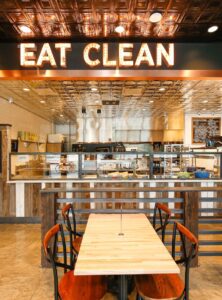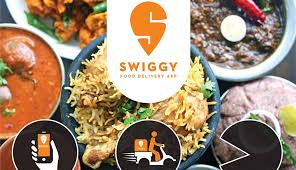4 trends in foodservice that your customers want right now
The global food service market is at a record high which mean fast casual restaurants will be fighting for a piece of the action and will need to set up their hospitality recruitment efforts to keep up with the demand.
The battle to earn part of this additional revenue is more difficult than ever as consumer expectations are higher, placing more pressure on food service operators to incorporate quality into every inch of the experience or risk losing out to more daring concepts.
The fastest way fast casuals can ensure customer victory is to understand their desires for not only new menu items but which restaurant technologies they’d like to use and the types of dining experiences they prefer.
Below are food service trends I am seeing going into 2019.
- Clean and green living.
- Individualized eating experiences.
- Increasing engagement through gamification.
- Connecting with the busy consumer.1. Clean and green living

As health and ethical trends become increasingly important for consumers, food service players are embracing localization, the shortening of distances between the source of an ingredient and the restaurant. Some restaurants take this even further by “hyper-localizing” the supply chain with urban farming because of environmental benefits and the perception of fresher food. While some chains could source all of the farm’s produce to its stores, it instead donates 75 percent of what it grows to local partners.”We feed, teach and instill healthy habits through programs like our Farm Internship and Salad Days program — which aims to provide and short and impactful farm experience to get young campers excited about fresh vegetables and healthy eating,” Fuqua said.The remaining 25 percent goes into the Boston restaurants, which helps save on food costs at several Boston stores.
“Beyond cost savings, Hannah Farm has served as a place for education and innovation, which has aided in other areas of the business,” Fuqua said. “Our farm director, Casey Ballin, and executive chef, Linh Aven, are working together on an ongoing basis to test new varieties of crops as well as new farming practices, which are not only good for the soil but also increase productivity.”
More importantly, customers feel good about spending money at B.Good. Insights from a recent customer survey, for example, made it clear that having healthy options and high-quality ingredients are their top priorities, and they believe B.Good checks both of those boxes.
“Respondents indicated that the quality of ingredients and healthfulness were two of the most important aspects when determining where to eat,” Fuqua said. “Nearly 100 percent of respondents agreed that B.GOOD sells health-conscious food, and on top of that, the results indicate our customers believe we do a better job of local sourcing and providing quality ingredients compared to other fast casuals. Our mission is to serve food with roots, and when people walk into our restaurants it becomes clear how we’re executing on that mission — from the map detailing where our seasonal ingredients come from to the faces of our makers covering the walls.
“It’s important to understand that the purpose of our farm is not just getting the product into the restaurant. It is as much an educational tool as it is an operational tool.”2. Individualized eating experiences
Offering more tailored dining experiences to solo diners in metropolitan cities where consumers cook less and eat out more should also see growth in 2019. Meals designed specifically for individual portions also help reduce food waste and are particularly attractive to consumers with dietary control and calorie counting concerns, Dutton said. Some restaurants are taking customization to an even higher extreme. India’s Swiggy Pop, for example, has recognized that younger consumers in India are increasingly independent and living alone. The virtual concept, which launched earlier this year in Bengaluru and now serves Delhi-NCR, Mumbai, Pune, Hyderabad, Chennai and Kolkata, caters exclusively to solo diners. It delivers each order in 30 to 35 minutes and promises that all meals will be apportioned properly in terms of the size of the meal and its nutritional value. Entrees range in cost from ₹.99-200 (up to $3 US), and there are no delivery fees.
Some restaurants are taking customization to an even higher extreme. India’s Swiggy Pop, for example, has recognized that younger consumers in India are increasingly independent and living alone. The virtual concept, which launched earlier this year in Bengaluru and now serves Delhi-NCR, Mumbai, Pune, Hyderabad, Chennai and Kolkata, caters exclusively to solo diners. It delivers each order in 30 to 35 minutes and promises that all meals will be apportioned properly in terms of the size of the meal and its nutritional value. Entrees range in cost from ₹.99-200 (up to $3 US), and there are no delivery fees.Based on consumer demand and ordering patterns, the company has created more than 20,000 meals, which range from biryani with raita & kebabs to a bowl of Thai curry with rice and a cold drink.
3. Increasing engagement through gamification
Gamification, which has developed into a $1.65 billion industry and is estimated to surpass $11.1 billion in the next few years, isn’t exactly new, but it used to be a marketing tool used only by major brands. Chipotle, for example, first launched an online game in 2013, allowing users to match real Chipotle ingredients, avoiding “imposters” — non-natural ingredients. Last year, it released Cado Crusher, an online game that encouraged fans to smash and combine ingredients to make their own version of Chipotle’s guacamole.
Hospitality Recruitment: How to Recruit Professionals in Hospitality








